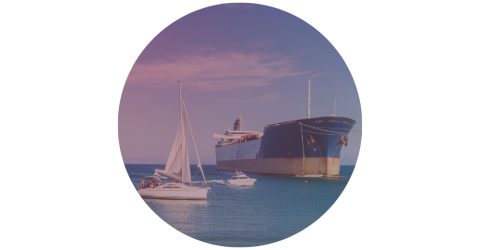
What are maritime communications?
Maritime communications include ship-to-ship and ship-to-shore communications. Maritime communications are primarily intended for rescuing people and maritime safety.
Over the centuries, seafarers` means of communication have changed significantly, from the transmission of signals with light sources and flags in line of sight, Morse radiotelegraph telecommunications to modern global automated marine radio systems. Currently, radar and satellite systems are also used in maritime communications, allowing rescuers to automatically receive information about ship accidents and their circumstances at virtually anywhere on the globe.
As shipping takes place in seas and oceans between different countries and continents, the use of radio frequencies must be internationally harmonized. Frequency bands to be used for maritime communications are defined in the ITU Radio Regulations. It is the responsibility of each national communications administration to issue licenses for the use of maritime communication stations and to register the allocated station identifiers (call signal and MMSI number) in a single international register, the Maritime Mobile Access and Retrieval System (MARS).
In Latvia, the permit for maritime communication stations is issued by SJSC ''Electronic Communications Office of Latvia''.
Inmarsat is a mobile satellite service provider established by the International Maritime Organization (IMO) in 1979 to provide secure communications for ships, wherever they may be, and to reject a distress alert if necessary.
Inmarsat communication services are available on the sea, air and land.
Inmarsat communications are particularly widely used in maritime shipping, including fishing.













